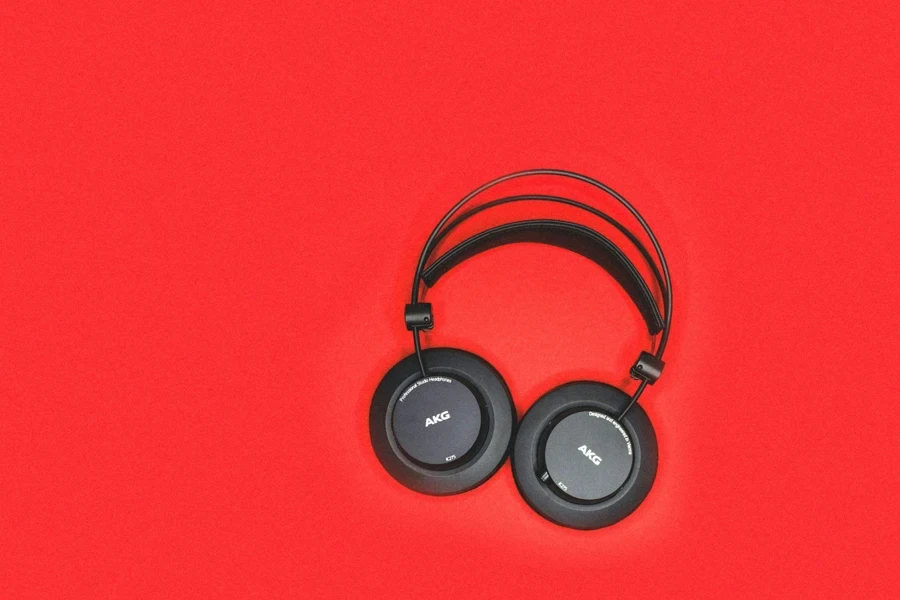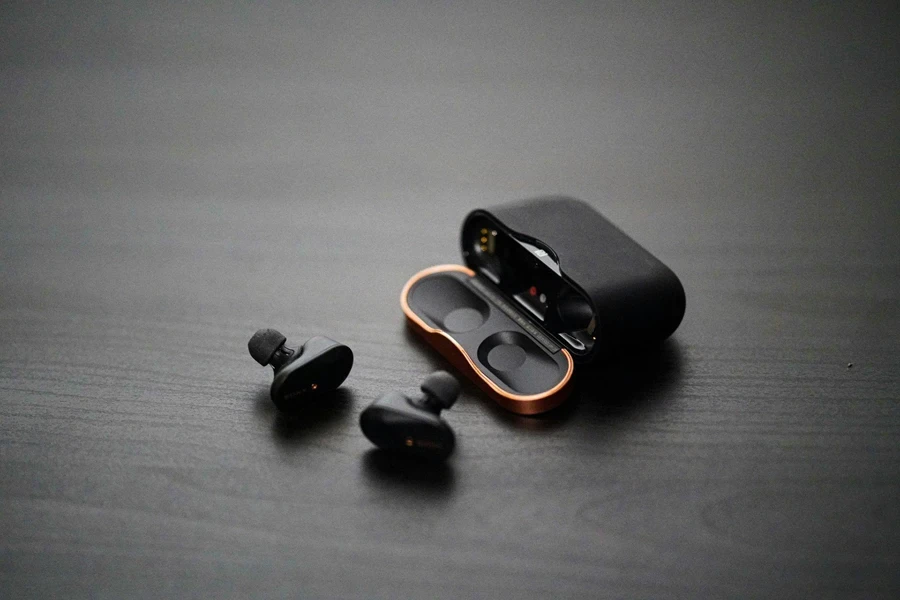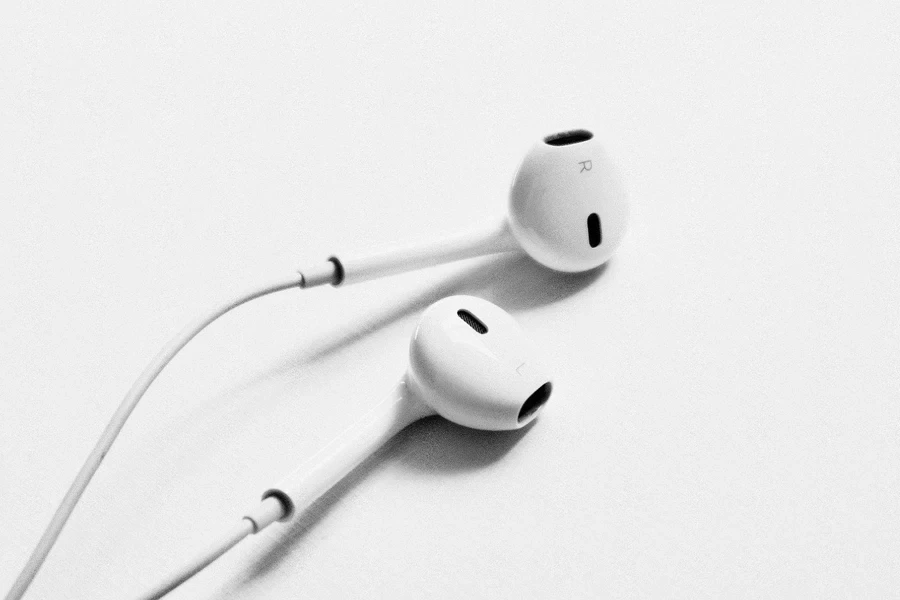Table of Contents
● Introduction
● Market overview
● Key technology and design innovations
● Things to consider when selecting earphones and headphones
● Conclusion
Introduction
Exploring the essential features for selecting top-quality headphones is crucial for audiophiles, gamers, and everyday listeners. The analysis starts with a detailed look at key headphone specifications such as frequency response and impedance and their effects on audio performance. Sound quality is critically examined, focusing on soundstage, bass response, and clarity while assessing the impact of design and material choices on acoustics. The importance of comfort and ergonomic design for extended use is thoroughly reviewed. Further, the latest technological advancements in headphones are discussed, including improved Bluetooth connectivity, active noise cancellation, and low latency features, underscoring their importance for gaming and professional use. The article also provides targeted recommendations for the best headphones for studio, gaming, and casual listening, featuring top models from distinguished brands to ensure informed decisions for enhancing the listening experience.

Market overview
The headphone market has demonstrated robust growth and is poised to continue its expansion with a compound annual growth rate (CAGR) of approximately 7.1% through 2029 according to Grand View Research. This growth is primarily driven by increasing consumer demand for wireless and noise-canceling headphones, advancements in Bluetooth technology, and a growing emphasis on mobile connectivity. The market, currently valued at around $13 billion, is projected to reach approximately $20 billion by the end of the decade. This increase reflects a broader trend towards high-quality personal electronics and heightened consumer expenditure on audio enhancements.
In recent years, the market dynamics have shifted, with new entrants rapidly gaining market share in emerging markets by offering competitively priced products that include features typically reserved for premium segments. This competition has spurred further innovation and price competition, reshaping consumer expectations and offerings. Additionally, the integration of smart technologies like voice assistants and health monitoring capabilities in earbuds and headphones is becoming standard, catering to the lifestyle needs of tech-savvy consumers. The expansion of the market is also supported by a wider consumer base that demands high-quality audio experiences not only for music but for diverse multimedia content consumption, including podcasts, video games, and virtual meetings, indicating a diversified and expanding market landscape. This data on market growth and projections is sourced from recent industry analyses and market research reports.

Key technology and design innovations
Advanced wireless technology
The move from wired to wireless headphones has been largely driven by the advancement in Bluetooth technology, with Bluetooth 5.0 and its successors offering greater range, higher data transfer rates, and improved battery efficiency. This technology has enabled manufacturers to design headphones that are not only free from physical constraints but also capable of delivering high-fidelity audio that can rival wired counterparts. The introduction of Low Energy Audio, a new standard part of Bluetooth 5.2, allows for multi-stream audio that can transmit several audio streams independently to devices such as earbuds, which enhances synchronization between video and audio streams and reduces latency significantly—a critical improvement for both gaming and video content consumption.
Active noise cancellation (ANC)
ANC technology has evolved to become a key differentiator in headphone offerings, utilizing advanced algorithms to actively cancel out ambient noise and provide a much purer audio listening experience. Modern ANC systems use a combination of feedforward and feedback microphones to analyze ambient noise both outside and inside the ear cup, enabling real-time adjustment to sound waves to cancel out noise effectively. Innovations have led to the development of adaptive ANC, which can adjust the level of noise cancellation in real time based on the environment, thus optimizing audio playback and battery usage.
Sound quality and high-resolution audio
Manufacturers have made significant advancements to support high-resolution audio, which delivers sound precisely as it was intended to be heard in the studio. High-resolution audio headphones support a wider frequency range from 20 Hz to 40 kHz, surpassing the range of human hearing and preserving all the details and nuances of a live performance. Additionally, technologies have been developed that allow wireless headphones to transmit high-resolution audio content without the traditional loss of sound quality associated with Bluetooth compression.
Ergonomic and sustainable design
Ergonomics have played a central role in headphone design, with a focus on creating products that can be worn comfortably for extended periods. Memory foam ear cushions, lightweight materials, and headband contouring improve comfort and fit, which is crucial for consumer satisfaction. Moreover, sustainability has become a priority, with companies like House of Marley using recyclable, bio-based materials and reducing the environmental impact of their products.
Smart Features and integration
Headphones today are often equipped with smart features like touch controls, voice assistants, and even health-tracking capabilities. Integration with AI voice assistants such as Google Assistant, Siri, and Alexa allows users to control music, get information, and manage tasks without ever needing to reach for their device. Some models offer sensors that monitor health metrics such as heart rate, suggesting a future where headphones could play a significant role in personal health.

Things to consider when selecting earphones and headphones
Sound quality
Sound quality is a critical aspect when selecting headphones or earphones. The ideal choice will have a balanced sound profile, featuring clear highs that are not overly sharp, detailed mids that accurately convey the vocal nuances and instrumental clarity, and deep bass that enhances the richness and depth of the audio without overpowering other frequencies. The driver size plays a significant role in sound production, with larger drivers generally capable of delivering a more powerful and expansive sound stage. The material of the drivers also affects the audio output; for instance, titanium or beryllium drivers are known for their ability to reproduce sound with high fidelity. Furthermore, high-resolution audio support is an essential feature for audiophiles as it allows the playback of audio files that are less compressed than typical MP3s, providing a listening experience that is closer to original studio recordings.
Comfort and fit
The comfort and fit of headphones are paramount, especially during prolonged periods of use. Over-ear headphones are often favored for long-term comfort due to their large ear cups that distribute pressure more evenly around the ears rather than directly on them. The padding material and the shape of the ear cups also contribute to the overall comfort. In-ear headphones, on the other hand, should come with a variety of ear tip sizes to ensure a snug fit that can maintain comfort and effective noise isolation. Factors such as the weight of the headphones and the pressure exerted by headbands should be assessed, as these can greatly influence the wearer’s comfort during extended listening sessions.
Noise cancellation
Active Noise Cancellation (ANC) technology is essential for those who frequently find themselves in noisy environments, such as commuting or working in open office spaces. ANC headphones use built-in microphones to detect ambient noise and generate opposing sound waves to cancel it out. This technology can greatly improve the clarity of audio playback and reduce strain in noisy situations. However, users should be aware that ANC can sometimes affect the audio quality by adding a slight hiss and may reduce the battery life of wireless models. The effectiveness of ANC varies between models and should be carefully considered based on the specific environments in which the headphones will be used.
Wireless vs. wired
The choice between wireless and wired headphones often comes down to user preference and specific needs. Wireless headphones offer unparalleled convenience by eliminating the physical tether to devices, making them ideal for active use or when moving frequently. However, they rely on battery power and can suffer from issues like latency and compression, potentially affecting sound quality. Wired headphones, while limiting mobility, do not have these issues and can provide a consistent, high-quality audio experience. They are typically preferred by audiophiles and professionals who prioritize sound quality over convenience.
Battery life (for wireless models)
For wireless headphones, battery life is a crucial factor. It is important to select a model that can sustain long periods of use without frequent recharges. Many modern wireless headphones offer battery lives ranging from 15 to 40 hours, with some models featuring quick charging capabilities that can provide hours of playback after just a few minutes of charging. Considering one’s daily usage patterns and choosing a headphone with adequate battery life can prevent disruptions and enhance user convenience.
Durability and build quality
Durability and build quality are important considerations as they determine the longevity of headphones. Users should look for headphones constructed with high-quality materials that can withstand daily wear and tear. Features such as water and sweat resistance, metal or reinforced plastic construction, and replaceable parts (like cables and ear pads) enhance the durability and maintainability of headphones. Headphones designed with modularity in mind allow users to replace individual components instead of the entire device, which can be both cost-effective and environmentally friendly.
Price
Price is an important factor in the selection of headphones. While it might be tempting to opt for the least expensive option, it is essential to balance cost with features and durability. More costly headphones often offer better build quality, superior sound, and additional features like effective ANC and high-resolution audio support. It is advisable to set a budget that allows for the purchase of a well-rounded model that meets both audio quality and durability needs, providing better value in the long run.
Conclusion
In the modern world, earphones and headphones are indispensable for everyone, from professionals to casual users, facilitating smooth communications. Choosing the right model involves evaluating several key factors: sound quality, comfort, noise cancellation capabilities, and the choice between wireless and wired. Technological advancements, such as improved Bluetooth connectivity and adaptive noise cancellation, provide enhanced user experiences and should be considered in the decision-making process. Investing in a high-quality pair of headphones or earphones can significantly enhance daily audio experiences, making it imperative to make informed choices based on these considerations.




